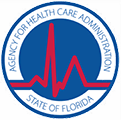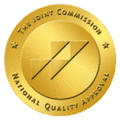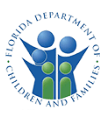Why Is Fentanyl Used to Cut Other Drugs If It Kills So Many People?

The drug crisis in the United States has taken many twists and turns, but today we are faced with the most challenging chapter yet. Recent data has shown the number of drug-caused deaths hitting the 100,000 mark, the highest it has ever been. Driving this parabolic increase is a drug known as fentanyl. This drug has been the topic of many headlines because of its potency. At 50- and 100-times greater strength than heroin and morphine, respectively, it takes only a tiny amount to cause overdose and death. There have even been reports of unsuspecting individuals (usually police during traffic stops1) that have come in contact with fentanyl and overdosed. With such small amounts of fentanyl causing such outsized consequences, it can seem baffling that illicit drug producers would include such a compound in their formulations. After all, don’t profits rely on the user staying alive? Let’s dive in.
A Short History of Fentanyl
Fentanyl is a synthetic opioid drug FDA-approved in the 1960s as an anesthetic and analgesic – for pain relief. In other words, fentanyl has legal use in treating chronic and acute pain after injury or surgery. Today, fentanyl is produced in several forms, including lozenges, effervescent tablets, sublingual tablets, sprays – sublingual and nasal, skin patches, and as an injectable intravenous drug. Typically, the drug enters the black market via legal prescriptions that are distributed illegally or by illegal production and distribution rings (most often found in Mexico and China).
The common signs of an opioid overdose are:
- Pinpoint (very small) pupils
- Falling asleep or losing consciousness
- Slow, weak, or no breathing
- Choking or gurgling sounds
- Limp body
- Cold and/or clammy skin
- Discolored, often blue, skin (most commonly in lips and nails)
Linda Dolin, Medical Director at SBMHC, discusses this worsening trend. “Fentanyl, like some other opioids, hit the market with good intentions and a real use case. Unfortunately, its potency is decimating a generation of adolescents and young adults, destroying their potential and sadly cutting their lives far too short. If in doubt, even if you believe the person is high on drugs, assume it is an emergency and get help immediately. If you have Naloxone, administer it right away. You could save a life by assuming the worst.”
Can You Avoid Fentanyl?
While it would seem logical to avoid fentanyl, it is very difficult to tell it apart from other drugs. Powdered fentanyl can be mixed with heroin, cocaine, methamphetamine, or even manufactured to look like other opioid prescription medications. The user would have no idea, just by looking at it, that the drug contains fentanyl. Similarly, fentanyl can be produced in liquid form as part of nasal sprays or eye drops. Only fentanyl test strips can detect if the product contains the drug. While these test strips are inexpensive and offer a relatively rapid result, it’s unreasonable to expect someone taking illicit drugs to test every time.
How Can Fentanyl Be Profitable?
Fentanyl production is extremely cheap, so manufacturing in China and Mexico has proliferated. These producers do not care about the toll on human life, and quality standards are non-existent. Unlike many other drugs that require significantly more intense production requirements, to the degree that manufacturers would be financially hurt by a law enforcement seizure, the sheer quantity of fentanyl production makes the occasional seizure less problematic from a financial perspective.
Furthermore, tolerance can often occur more quickly because of the drug’s potency. And while fentanyl is laced into other synthetic opioids, it is often added to less addictive drugs (think Adderall, cocaine, and Xanax), increasing the potential for dependence and continued use. While thousands are dying from fentanyl overdoses, many more are getting hooked.
Is an Overdose Death A Win or Loss for a Drug Dealer?
With many smaller dealers cutting blends of fentanyl-laced drugs, the question remains whether an overdose death is good or bad for business, and it depends on how you look at it. On one hand, an overdose death would suggest that a dealer’s drug is potent. For someone highly dependent, usually resulting from long-term usage, this may be a reason to buy from them. On the other hand, overdose deaths trigger investigations that can ultimately bring down a drug dealer or their syndicate. Unfortunately, the rise in fentanyl-related deaths has overwhelmed law enforcement resources, often letting dealers and manufacturers get away if the deaths are sporadic or seemingly unrelated. Further, for every dealer put away, another usually waits to take their place.
Tackling the Fentanyl and Opioid Crisis
You may remember in the early 2000s when there was a proliferation of pain management clinics, colloquially known as “pill mills,” prevalent in various areas around the US, particularly in Florida. These clinics employed licensed healthcare practitioners prescribing pain medication to virtually anyone who requested it. The result was an incredible rise in opioid abuse and deaths. A subsequent crackdown stopped this proliferation by making it far more difficult to acquire these pills through medical sources and driving the price of illicitly acquired prescription opioids higher. As mentioned above, however, fentanyl is produced so cheaply overseas that it is far more difficult to prevent its distribution. As such, the solution to the current crisis requires a multi-pronged approach starting with addressing underlying factors.
Addressing Why People Start Taking Drugs
For most, drugs represent an escape from their day-to-day, often punctuated by physical or emotional trauma. While a substance abuse disorder must be treated as a chronic illness and not as a simple case of willpower, the choice to start taking drugs is just that – a choice. Intervening at this earliest time can stop what otherwise could become a lifelong fight that can, at any point, result in paying the ultimate price.
Often, the feelings of emptiness that lead children and young adults to start abusing substances come from trauma. Trauma can mean different things to different people, but one of the clear underlying causes of addiction that we see at SBMHC is an undercurrent of past negative experiences that have caused the person to alter their outlook in some, usually dramatic, way. If they do not receive appropriate psychological care at this early stage, many turn to substances of abuse to fill that void or at least temporarily remove themselves from the pain.
To this end, families play an important role in the development of and recovery from these events and resultant addiction or mental illness concerns. We often say that the mental health or addiction concerns of a single individual make the entire family sick; this necessitates the entire family coming together to promote and support the recovery and therapeutic process, and why the family program at SBMHC is such a big part of our therapeutic process. We consider it our crown jewel and a primary differentiating factor from other mental health facilities.
Today, there has been a significant push through the legislature and law enforcement organizations to address the fentanyl problem. However, as it always has been, the community is a significant part of the solution. For one, the stigma associated with addiction and mental illness must be addressed. As a society, we have made huge strides in improving access to care and talking about mental health and addiction issues without judgment. But we have a long way to go. Today, we must view the fentanyl crisis as a challenge every bit as important as the pandemic and other medical concerns like cancer and heart disease.
Resource:
- https://www.wfla.com/news/florida/video-florida-cop-treated-for-overdose-after-possible-fentanyl-exposure-police-say/






